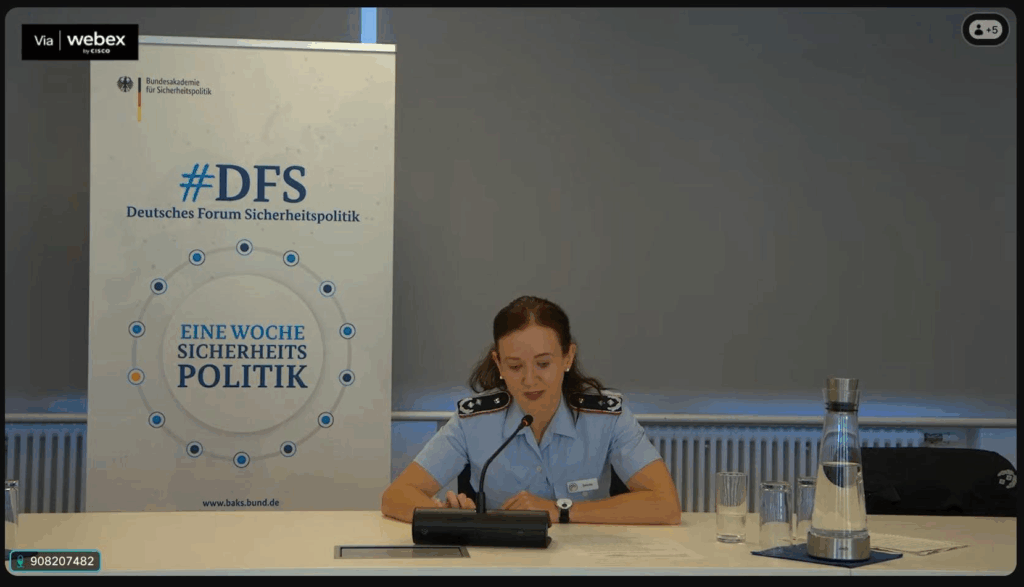
BlackBoats at the Federal Academy for Security Policy – Designing Maritime Resilience from the Ground Up
On May 6th, 2025, I had the honour of joining a virtual expert panel at the German Security Policy Forum (DFS2025), hosted by the Federal Academy for Security Policy (BAKS).
The topic: “Protecting Critical Maritime Infrastructure” – a challenge that touches the core of national resilience, energy sovereignty, and operational defence.
What unfolded was one of the most lively, interdisciplinary, and insightful conversations I’ve experienced in the field of maritime security.
A Unique Exchange – From Law to Logistics
The discussion began by exploring what marKritis – maritime critical infrastructure – actually means. Surprisingly, we found common ground through a US Supreme Court case on press freedom, highlighting the evolving legal, societal, and institutional definitions of “criticality.”
This led to a truly rare convergence of legal, political, technical and operational perspectives – conducted in a round that was as familiar and eloquent as it was strategically dense.
Integrated Security – Starting in the System Design
One of my central contributions was to highlight that security cannot be retrofitted. It has to be architected into the system – from vessel capabilities to communication protocols and interagency coordination models.
Moderator Lt. Col. Tina Behnke explicitly appreciated this perspective:
“It’s rare that the idea of security is thought through from design to deployment – thank you for anchoring that in the discussion.”
I shared how BlackBoats designs tactical autonomy not just for reaction, but for presence, deterrence and seamless integration into public security architecture.
Our approach allows a single vessel to:
- serve civilian monitoring duties,
- escalate to federal police operations,
- and, if required, hand over to military command
— all within one operational logic, aligned with legal authority.
Smart Deterrence and the Tactical AI Debate
The panel also gave space to address closed-kill-loop development – a sensitive but essential topic in autonomous defence. It’s already under development globally with teams that are not necessarily alined with european souvereign interests.
“That’s a heavy topic, Ms. Engelhard,” was one of the immediate responses – not dismissive, but recognising the strategic depth and necessity of the subject.
These conversations are crucial. Not to glorify technology – but to prepare responsibly for tomorrow’s defence scenarios.
Such Systems can be built – So Let’s start to Integrate
From Dr. Patricia Schneider’s observation on cost-efficiency through command adaptability,
to Dr. Moritz Brake’s clear call for preemptive maritime coordination,
to Dr. Joachim Weber’s insights on the fusion of internal and external security domains –
the round made one thing clear:
We shoud get ready to act. Not proactive but reactive capabilities. The only question is: How fast do we need to align?
Diana S. Engelhard